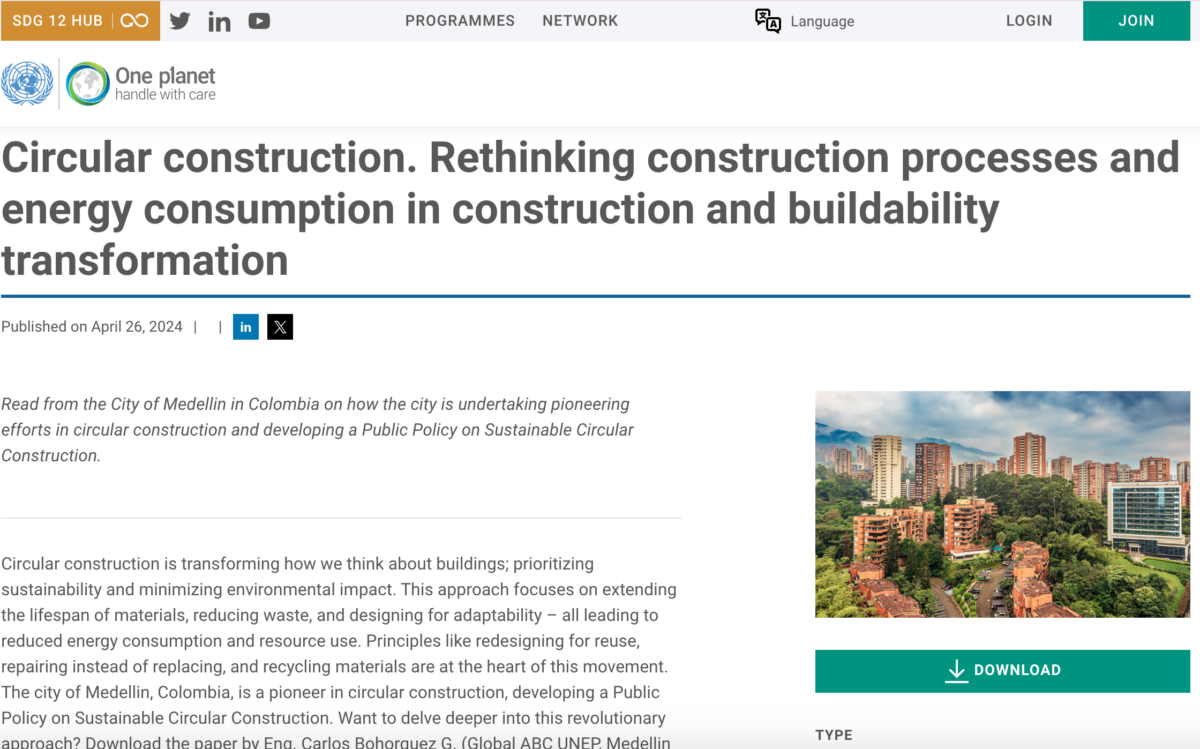Circular construction: Rethinking construction processes and energy consumption in construction and buildability transformation
This paper provides an explanation of the City of Medellin's circular construction model that it has implemented.


Circular construction prioritises sustainability and minimises environmental impacts. The City of Medellin has implemented a series of technical criteria for the transition between current construction systems and energy consumption in buildings, towards their evolution as efficient and low-carbon circular construction systems. In this paper, Carlos Bohorquez, who works at the Medellin City Hall Planning Office, offers an all encompassing explanation of circular construction principles, strategies and innovative technologies. This model is an example of good practice for other local governments looking to implement circular construction models.
This paper outlines the basic criteria that needs to be included in circular construction, and then explains different aspects of the implementation of these criteria, from supply chains to construction, with an accent on rationality. The criteria include: